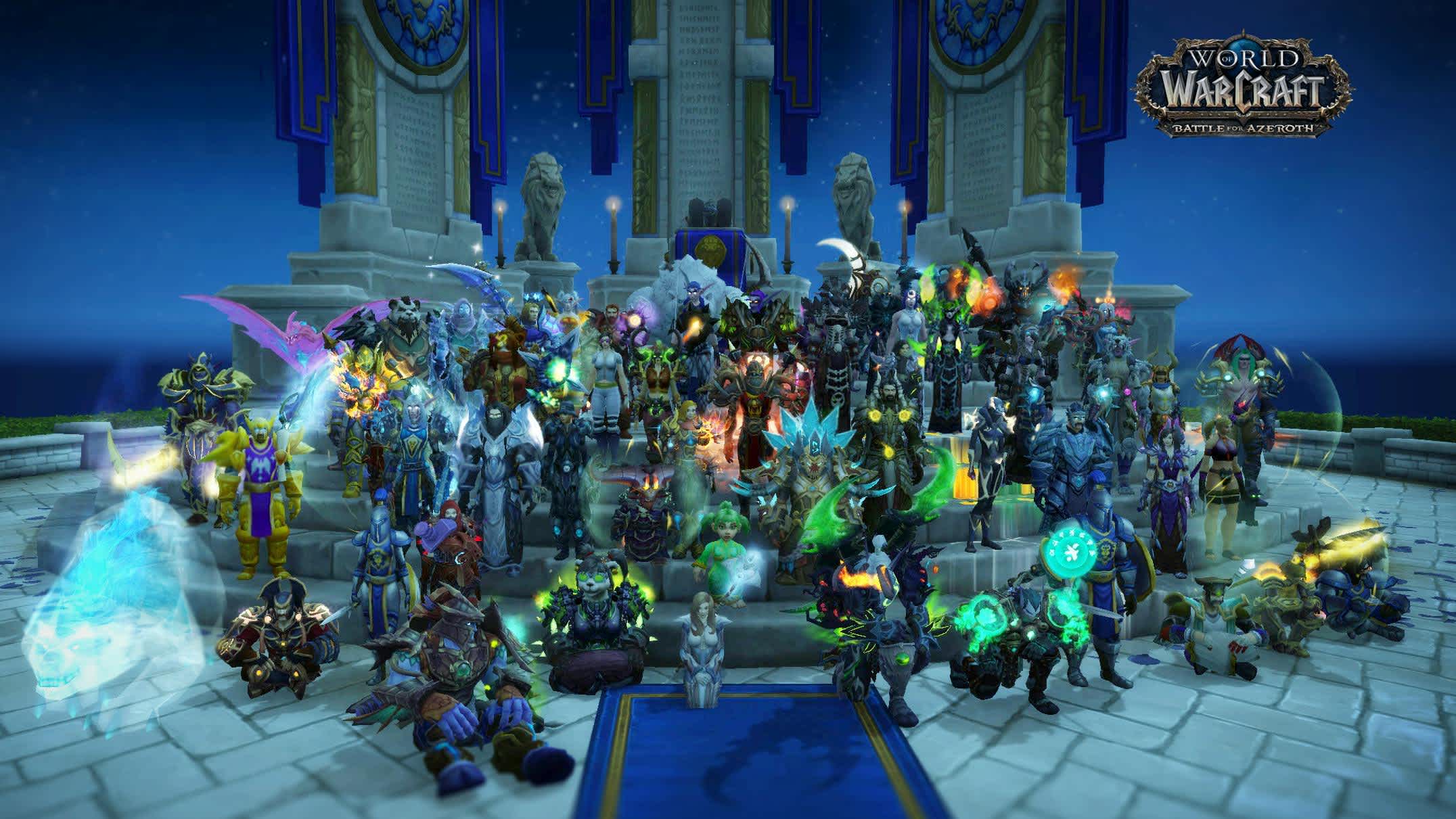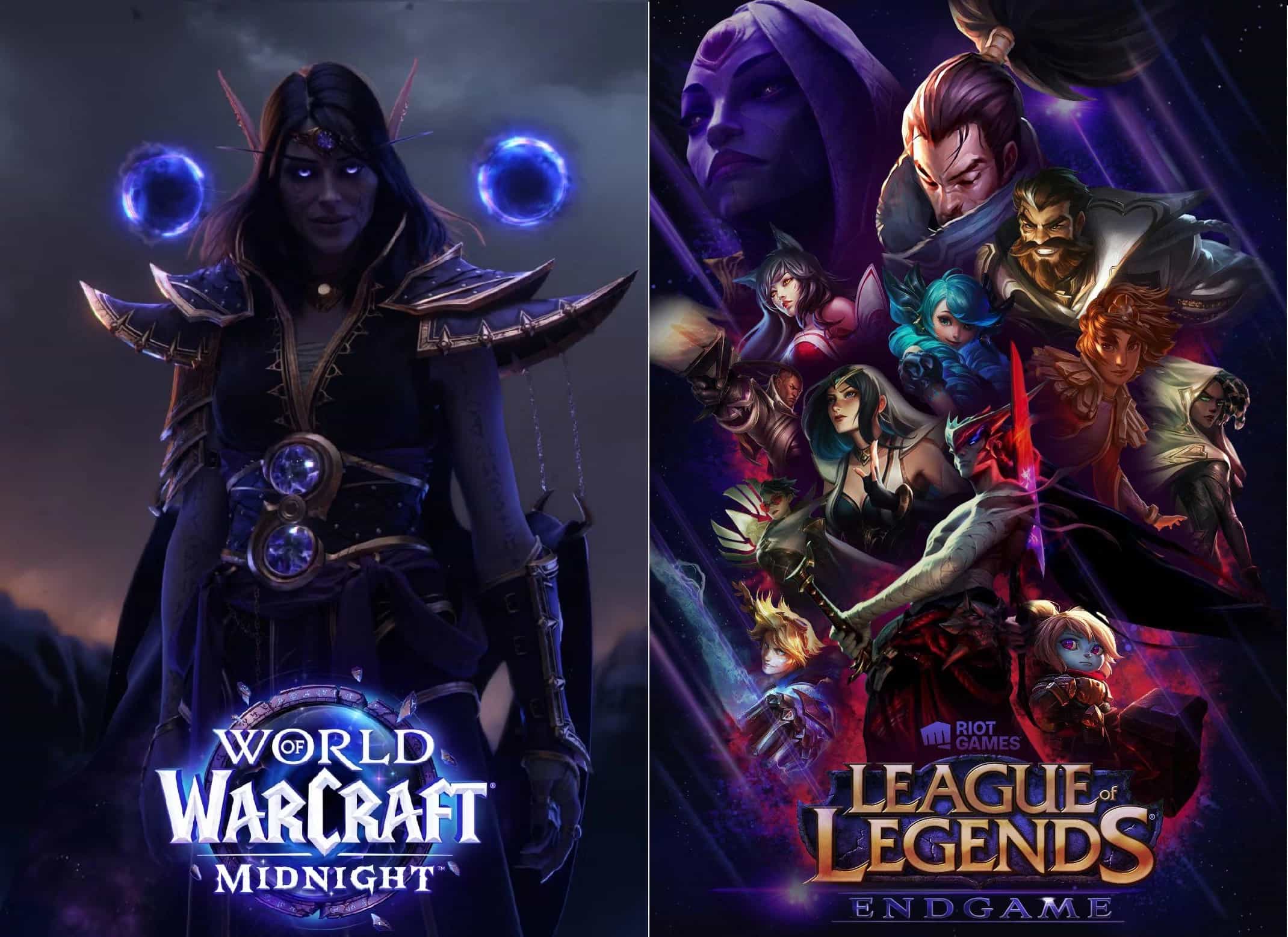WoW vs LoL: Key Differences, Popularity and Esports Breakdown
League of Legends, Riot Games’ flagship MOBA, and Blizzard’s legendary MMORPG World of Warcraft have both left huge fingerprints on modern gaming... but they continue to do so in very different ways. One is all about the heartbeat of a single match; the other is about months (or years) of building a character you can’t help but care about.
Both created communities that keep showing up, season after season, and the never-ending debate up to this day is:
Which one truly sits at the top of competitive esports?
Short answer: it depends what you mean by “top.” Long answer: well, read on...
 credits: Riot Games
credits: Riot GamesFundamental Gameplay Contrast: MOBA vs MMORPG
League of Legends is all about ten players, five per side, throwing everything they have at a single map: Summoner’s Rift. You start from scratch every match: level one, a few gold pieces, and a handful of decisions that compound into the next ~30 minutes of chaos. That reset mechanic makes each game a fresh puzzle; mastery is about making better choices at the moment.
World of Warcraft asks for a very different contract. Characters grow over long stretches: you level, hunt gear, tweak stats, and test builds. When you step into PvP arenas (2v2 or 3v3) or join a Mythic Dungeon race, what you bring from outside the match matter: it’s preparation as much as execution. Two very different kinds of satisfaction... with both equally enjoyable.
| Feature | League of Legends | World of Warcraft |
|---|---|---|
| Game Type | MOBA | MMORPG |
| Release Year | 2009 | 2004 |
| Developer | Riot Games | Blizzard Entertainment |
| Player Focus | Team-based 5v5 competitive arena | Open world progression, raids, and PvP arenas |
| Monetization Model | Free-to-play with cosmetic purchases | Subscription-based |
Competitive Essence: How the Games Measure Skill
League’s skill tests are visible and immediate. It’s landing a narrow skill shot, decision-making in the fog of a team fight, or predicting an opponent’s move two seconds before they make it. The reward is instant: a great play, a highlight clip, a flipped objective.
WoW’s skill often lives in subtler places. Cooldown management, matchup theory, and pre-game preparation are huge. Winning an arena or a dungeon race can hinge on a single well-timed defensive cooldown or having the right trinket equipped. It’s less about flashy mechanical outplays and more about synchronous timing and long-term polish.
Historically, League was designed with esports in mind; WoW’s competitive layer grew organically from communities and then was formalized by Blizzard. That origin story still shapes how each scene feels to competitors and viewers alike.
Ranking Systems and Match Tempo
League’s ranked ladder is famous: from Iron up to Challenger. Wins give you League Points (LP), losses take them away, and a hidden MMR leans in the background trying to keep matches fair. The tempo of a ranked climb in League is often a personal hustle: individual performance, tiny improvements, tilt control.
WoW’s arena ratings measure team cohesion and success. The sense of climb in WoW is collective: you and your teammates learning the same timings and counterplay. Arena matches can breathe longer, too: standoffs, slow attrition, clutch interrupts... matches that can become literal psychological marathons.
Typical match length? League games average around 30 minutes and end with a clear objective: push the Nexus. WoW arenas can stretch and breathe in ways that sometimes feel less decisive, but no less dramatic when someone lands a fight-winning play.
Balance Philosophy and Meta Evolution
Riot’s balance cadence moves fast: think bi-weekly patches touching champions, items, or systems. That rhythm keeps the meta shifting; champions fall in and out of favor quickly. Some players thrive on the variety, others want stability so they can master a small pool of picks.
Blizzard tends to move more slowly with WoW balance. Big changes often come with seasons; hotfixes patch glaring issues in between. The advantage is depth: players can specialize deeply. The downside? Problematic compositions can dominate longer before they’re corrected.
Esports Ecosystem and Audience Reach
League of Legends operates on a League (ba-dum-tss) of its own level almost rivaling with traditional sports broadcasting rather than other Esports. LoL's regional leagues (LEC in Europe, LCK in Korea, LPL in China, and the rest) have their own stories year after year before everything funneling into Worlds.
If you have watched the 2025 Worlds finals, T1 vs. KT Rolster, you've probably also seen reports afterward that the match pulled in around 6.74 million peak viewers outside China, plus over 133 million hours watched. Numbers like that don’t just sit inside the gaming bubble; they leak into mainstream news because they’re simply too large to ignore.
World of Warcraft lives in a different lane, and honestly, that’s part of its charm. The Arena World Championship (AWC) and Mythic Dungeon International (MDI) bring in a loyal group of fans who follow every bracket update like it’s a hometown sport. The scale is smaller, sure, but there’s a kind of intimacy to it. In 2025, the AWC (tied into The War Within Season 3) ran with a prize pool of about $220,000, and the MDI lifted the overall rewards to roughly $520,000. Peak viewership usually clears the 200,000 mark during big moments. It’s nowhere near League’s global blast radius, but within the WoW scene, those numbers still feel like a big gathering.
And then there’s production. League throws everything at the screen: enormous arenas, AR dragons swooping behind players, and broadcasts polished to a shine... everything aimed at bringing the highest amount of viewers. WoW, by contrast, leans into a more homegrown vibe, online-first shows with commentary that feels like you’ve pulled up a chair next to longtime casters such as Eiya, Venruki, Ziqo, or Supatease. Less fireworks, more familiarity.
| Game | 2025 Peak Viewers | 2025 Prize Pool | 2025 Tournaments |
|---|---|---|---|
| League of Legends | 6,752,585 | $14,369,566 | 119 |
| World of Warcraft | 157,366 | $110,000 | 9 |
Prize Models and Interaction
Riot’s franchising model gives teams stable salaries, revenue sharing, and consistent branding. That stability feeds long-form storytelling about teams and players over seasons. Blizzard’s model for WoW — more open-cup and event-focused — is accessible but doesn’t create the same continuous narratives that franchising does.
Both companies use drops and cosmetics to keep viewers engaged. Riot leans heavily into Twitch Drops, event passes, and cross-game promotions that make tuning in feel like a must. WoW offers drops too, but they tend to come off as smaller bonuses rather than central pieces of the viewing experience.
Individual Climbing vs Collaborative Bonds
League’s ladder emphasizes personal climb, often solo. That fosters competitiveness but also frustration and occasional toxicity when solo players feel let down by teammates.
WoW revolves around teamwork: arena duos or trios and raid guilds that practice together. Those bonds make for tight-knit communities — great for retention, less inviting for a solo newcomer trying to reach the highest levels.
 World of Warcraft guild members posing (Image credit: Blizzard)
World of Warcraft guild members posing (Image credit: Blizzard)Community Dynamics and Culture
Where League’s community is fast, clip-driven, and often loud (think r/leagueoflegends highlight threads and highlight reels), WoW’s fanbase leans into lore, mechanics, and nostalgia. That difference shapes what each scene values when it comes to content: micro-highlights for League, longform guides and theorycraft for WoW.
Both communities have heroes: streamers and players people follow religiously. WoW arena fans value specialists like Whaazz, Raiku, Cdew, and Pikaboo, while League’s scene elevates players into household names in esports circles. Toxicity exists in both, but it shows up differently: riotous tilt in League’s solo queue vs. critical performance feedback inside close-knit WoW groups.
Viewing Metrics and Regional Trends
The 2025 Worlds final between T1 and KT Rolster was one of the biggest esports moments of the year, with the previously mentioned ~6.74 million peak viewers outside China. Platforms and regions played different roles: YouTube reported a record 3.77 million concurrent League viewers during Worlds 2025, Korea’s CHZZK streamer passed 540,000, and TikTok saw a peak near 430,000 concurrent viewers — all indicators of how watch patterns are diversifying.
WoW’s AWC sat around the 200,000-viewer peak mark during major moments — smaller, but steady and meaningful to the game’s ecosystem.
| Metric | League of Legends | World of Warcraft |
|---|---|---|
| Monthly Active Players | 130-160 million | 8-10 million (all versions) |
| Daily Active Players | 20-32 million | 1-2 million |
| Peak Concurrent Players | 8+ million | N/A |
Language and Geographic Outreach
Korean broadcasts were central to League’s global tournament surge in 2025, adding heavily to peak numbers. Vietnam also had a standout showing at about 1.24 million peak viewers in certain events. Meanwhile, WoW’s esports audience remained more NA/EU-centric with fewer multilingual broadcasts.
Riot’s investment in localization and cross-platform marketing gives League a broader footprint. Blizzard’s coverage tends to be more centralized and narrower in scope — not a flaw, only a different strategy with different goals.
Riot’s Multidimensional League Ecosystem
League's rich lore means that it has evolved to become much more than just a MOBA. There’s Arcane, the animated show that brought Runeterra to a wider audience, plus Wild Rift for mobile, Legends of Runeterra for card fans, and Teamfight Tactics for strategy-lovers. Cross-game events and shared IP keep League in cultural conversations beyond the map.
 2XKO Fighters drawn from League characters (Image credit: Riot Games)
2XKO Fighters drawn from League characters (Image credit: Riot Games)Blizzard’s Event-Centric Esports Strategy
WoW’s esports heartbeat often syncs with events like BlizzCon: AWC and MDI shine there. Outside those moments, activity tends to pulse — bursts of attention peppered across the year.
After Overwatch League’s collapse in 2023, Blizzard pivoted toward leaner formats for WoW — formats that are more accessible, less franchise-heavy, and sometimes smaller in prize pools. BlizzCon returned in 2025, and Blizzard confirmed AWC and MDI would be featured again at BlizzCon 2026, keeping those events on the calendar for fans.
 BlizzCon 2026 early bird ticket promotion by Blizzard
BlizzCon 2026 early bird ticket promotion by BlizzardEsports Dominance in 2025: Who Leads?
Measured by scale and global visibility, League of Legends was the clear frontrunner in 2025. Estimates put League’s monthly player reach around 130–160 million, with the Worlds final peaking at about 6.7 million viewers. WoW, by contrast, retained a smaller but devoted base: roughly 8–10 million monthly players and peak esports viewership in the hundreds of thousands rather than millions.
That doesn’t make WoW “lesser” in value, it just indicates different strengths. League is built for constant spectacle and global competition. WoW offers deep community ties and the slow-burn joy of long-term progression.
Both games bring something unique to the table. If you want razor-sharp pro play visible in every frame, League will likely scratch that itch. If you prefer the richness of buildcraft, lore, and teamwork that unfolds over longer stretches, WoW has the edge.
Follow upcoming League tournaments, live scores, and statistics on Strafe, your hub for esports insights.
Common Questions
Is World of Warcraft an esports title?
Absolutely. WoW hosts significant esports events including the Arena World Championship (3v3 PvP) with prize pools exceeding $220,000 and the Mythic Dungeon International (team dungeon races) offering over $300,000.
Which is more challenging: LoL or WoW?
Each requires different expertise. League demands sharp reflexes, split-second choices, and intense skill execution in relatively short matches. WoW emphasizes extensive preparation, optimizing gear and strategy, and sustained team coordination in lengthier encounters.
Player base comparison for 2025?
LoL engages roughly 130 to 160 million active players monthly, with daily users between 20 and 32 million. WoW’s total player base, including retail and classic servers, stands near 8 to 10 million monthly and 1 to 2 million daily.


